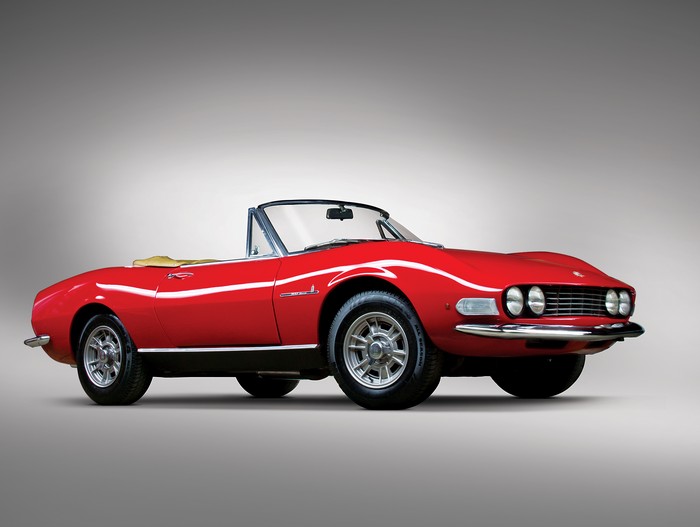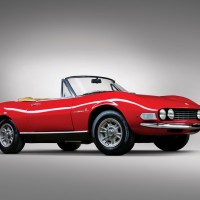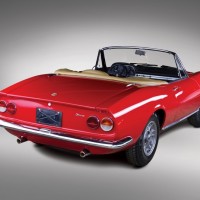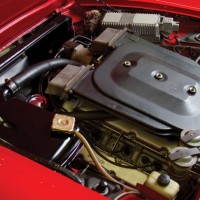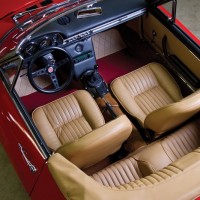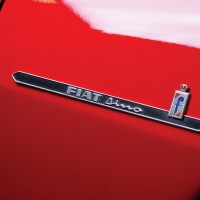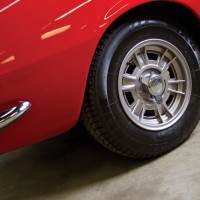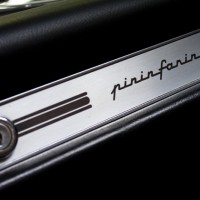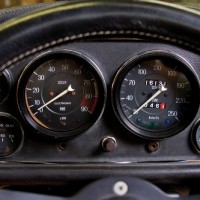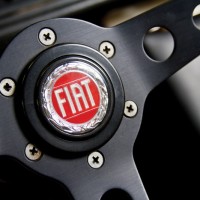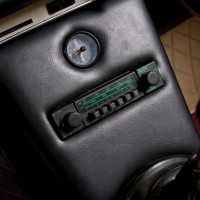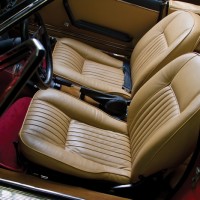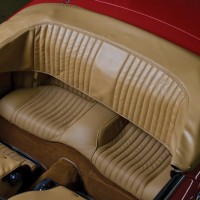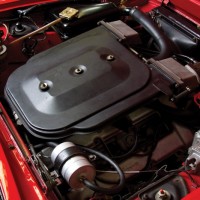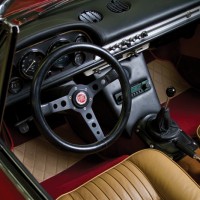The 1965 Dino 206S Speciale coupe was Enzo Ferrari’s tribute to his late son, Dino. More practically, it was a way of making the new all-alloy, Ferrari-built V6 eligible for Formula Two competition by building 500 production cars equipped with it.
Given Ferrari’s limited production, Fiat used the engine in a new, sporty model that also carried the Dino name, and it would be built in larger numbers starting in 1966. The sound of the triple Weber-carbureted V6 engine was pure Ferrari, but the larger Italian automaker made several improvements to the Ferrari engine design for series production, ensuring durability and “normal” performance during day-to-day use.
Performance was exceptional for a 2-liter car, with the open Spider capable of 0–60 mph in seven seconds — and a top speed of 130 mph. Production of the Pininfarina-designed-and-built Fiat Dino 2000 Spider continued until 1969, which was the year that Fiat took over a large share of the Ferrari company. More than 2,000 had been produced, but very few were brought to the United States. Accordingly, they are considerably rare on these shores today. The example offered here was fully restored several years ago, and it has been well-maintained with gentle mechanical work. It has achieved an Award of Recognition when displayed at the Milwaukee Masterpiece Concours d’Elegance and will be a thrill to drive and enjoy, with that familiar exhaust note ringing in one’s ears. It is certainly a worthy pony in the corral of stallions.
SCM Analysis
Detailing
| Vehicle: | 1967 Fiat Dino Spider |
| Number Produced: | 1,989 |
| Original List Price: | $5,400 |
| Tune Up Cost: | $2,000 |
| Chassis Number Location: | On side frame rail above right wheel |
| Club Info: | Fiat Club America |
| Website: | http://www.fiatclubamerica.com |
This car, Lot 190, sold for $99,000, including buyer’s premium, at the RM Auctions Amelia Island, FL, sale on March 9, 2013.
The Fiat Dino presents a challenge for many enthusiasts.
Fiat’s most exotic car since the 8V, the Pininfarina-designed Spider and the Bertone coupe are among the most attractive 1960s sports/GT cars from Italy. So they’ve got the looks.
The Ferrari V6 engines — both the 2-liter and later 2.4-liter — sound great, offer more-than-adequate performance for the period and certainly have a pedigree. Parts for the engine are not impossible to find, and they’re no more difficult to service than most others of their type. So they’ve got “go” to accompany the “show.”
They also wear Fiat badges, which ensures that a segment of the collector world will never give them the credit they deserve — and that’s been both a curse and an opportunity, thanks to the depressing effect on value from that perception. All the 2.4-liter Fiat Dinos had their final assembly done at the Ferrari factory, and with due respect to the Ferrari press office, the power output from the identical engines was, well, identical.
When people muse on the reasons why Enzo Ferrari put “Dino” badges on his 2- and 2.4-liter cars, lots of talk of “Ferrari road cars have no less than 12 cylinders” and the like is put forward. It’s far more likely that this very astute marketer didn’t want to have cars that shared their engines with Fiats called “Ferrari.” That this continued even after the launch of the V8-powered 308 GT4 is a bit strange, but that’s Italy for you.
Ferrari or Fiat, it’s a great car
The late, great Jan P. Norbye, author of a vast array of automotive books, penned a slim volume called “The New FIAT Guide” in 1969. In addition to the history of the marque, he writes in detail about the then-current range. When it comes to the Dino, Norbye waxes eloquently: “I have come to the point where I prefer the Fiat to a real Ferrari.” Why? He goes on to cite a number of compelling reasons, including the 130-pound weight advantage of the V6 over the V12, making the steering “lighter and quicker” and which allows the Fiat Dino to “negotiate sharp turns more quickly” than the senior thoroughbred from Maranello.
Norbye also explained how the benefits of weight saving also extend to stopping ability. Of course, he allowed that the V12s have a considerable ultimate power advantage. However, he also noted that the Dino Spider turned the quarter mile in under 15 seconds, had a top speed of 130 mph — and hit 90 mph in third gear, 121 mph in fourth gear and had a cruising speed of 120 mph — which made the car the most capable 2-liter production car of the day.
That sparkling performance was also reliable — thanks to the work of the Fiat engineers led by Aurelio Lampredi. They had to rationalize the design of the 2-liter engine for factory production in Turin. While it was redlined at 8,000 rpm, the engine was actually test-run up to 10,000 rpm.
The Dino is also part of a fascinating piece of Ferrari history. After the failure of the ASA “Ferrarina” project, Enzo was in talks with Innocenti to build a V6 to meet the F2 homologation requirements.
He had already been rebuffed by Fiat, but instead of pursuing the Innocenti deal, Enzo approached Ford about investing in his company to provide the support he needed. Of course, he made sure that Fiat heard about the talks with Ford, and presto! Fiat was now more than ready to assist Ferrari in their quest to build engines for a small-engined car.
Good enough for two eager bidders
Our subject car was a very nicely presented example, but not a perfect one. It clearly showed that time, attention and money was spent on it — and it was well maintained and properly used. The panel fit was acceptable, the paint likewise and the interior nicely trimmed — all to a “high-driver” standard.
The story was the same under the hood, with clean and correct finishes for a car that was meant to be — and was — driven.
Many Fiat Dinos that have come to public sale were not as well presented as this one. This car’s great condition may have sparked the battle between the bidders, leading to the impressive sale price. It bears repeating that a single sale doesn’t —and cannot — make a market, but it does take outlier sales such as this to move the market along. As has been the case in the past, we now need to see a true national show-quality restored or completely preserved original Dino Spider come along, so we can more accurately judge the top of the market.
Higher prices down the road?
That two people were willing to go to nearly $100k for a Dino Spider is not unbelievable considering the aesthetic and dynamic appeal of these cars. That they did it despite the Fiat badging either indicates that an ever-maturing market is looking past outmoded considerations of status — or that two overly aggressive Type A personalities decided the other wouldn’t go home with it.
Values had been cruising in the $60k range for good cars at auction, with the record being the $124,775 achieved for a 1970 2.4L Spider at Bonhams’ Monte Carlo sale in May 2008. Judged a #1 condition example, it would be interesting to see what such a car would bring today.
It is worth remembering that the limited production of these cars means that some trim pieces are difficult to source. However, as is the case with most Italian cars, a bit of sleuthing can uncover the origin of many parts shared with more humble cousins.
Make no mistake, your mechanical service costs will be Ferrari-priced, but if you buy a good car — and use it — your enjoyment will more than balance the running costs. The possibility of the recent frenzy seen in the Ferrari Dino market extending to the Fiat variety seems unlikely. However, with higher prices, better examples come to market. It never hurts to buy the best of anything. Well sold — for now. ?
(Introductory description courtesy of RM Auctions.)
